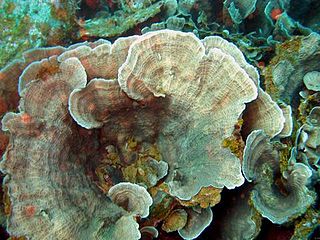Related Research Articles

T wave alternans (TWA) is a periodic beat-to-beat variation in the amplitude or shape of the T wave in an electrocardiogram TWA was first described in 1908. At that time, only large variations could be detected. Those large TWAs were associated with increased susceptibility to lethal ventricular tachycardias.

Electrical alternans is an electrocardiographic phenomenon of alternation of QRS complex amplitude or axis between beats and a possible wandering base-line. It is seen in cardiac tamponade and severe pericardial effusion and is thought to be related to changes in the ventricular electrical axis due to fluid in the pericardium, as the heart essentially wobbles in the fluid filled pericardial sac.

Pulsus alternans is a physical finding with arterial pulse waveform showing alternating strong and weak beats. It is almost always indicative of left ventricular systolic impairment, and carries a poor prognosis.

Kessleria is a genus of moths of the family Yponomeutidae.
Raphitoma alternans is a species of sea snail, a marine gastropod mollusc in the family Raphitomidae.
The Indotyphlidae are a family of common caecilians found in Africa, Seychelles and India. Like other caecilians, they superficially resemble worms or snakes.
Bigeminal pulse is a medical condition, easily confused with pulsus alternans. Similar features between bigeminal pulse and pulsus alternans are strong peak and weak peak. However, unlike pulsus alternans, the weak beat in bigeminal pulse occurs prematurely (early). Thus, not followed a pause as it is in pulsus alternans but occurs close to normal strong beat.
Cremnosterna alboplagiata is a species of beetle in the family Cerambycidae. It was described by Stephan von Breuning in 1935.

Cremnosterna carissima is a species of beetle in the family Cerambycidae. It was described by Francis Polkinghorne Pascoe in 1857. It is known from India, Myanmar, Cambodia, Laos, Thailand, Vietnam and Nepal.
Cremnosterna laterialba is a species of beetle in the family Cerambycidae. It was described by Stephan von Breuning in 1936.
Cremnosterna parvicollis is a species of beetle in the family Cerambycidae. It was described by Charles Joseph Gahan in 1895.
Cremnosterna plagiata is a species of beetle in the family Cerambycidae. It was described by White in 1858. It is known from Myanmar, Malaysia, India, and Thailand.
Cremnosterna quadriplagiata is a species of beetle in the family Cerambycidae. It was described by Stephan von Breuning in 1940. It is known from India.
Cryptocephalus alternans is a species of case-bearing leaf beetle in the family Chrysomelidae. It is found in Central America.
Anorostoma alternans is a species of fly in the family Heleomyzidae. The species was originally described by C.B.D. Garrett in 1925
Egira alternans, the alternate woodling, is a species of cutworm or dart moth in the family Noctuidae. It is found in North America.
Onychylis alternans is a species of marsh weevil in the beetle family Brachyceridae. It is found in North America.
Anisodactylus alternans is a species of ground beetle in the family Carabidae. It is found in North America.

Physocarpus alternans also known as dwarf ninebark and Nevada ninebark is a flowering shrub native to east California, currently found throughout Western North America. It was first described by J.T.Howell in 1931. It prefers growing on dry, rocky slopes, grows in pinyon and juniper shrublands, also found near limestone outcrops. It has been found to grown at elevations of 1800 to 3100 m above sea level. Aside from the native California specimens have been collected in Nevada, Utah, Idaho and Colorado. It flowers in June and July, producing small, white flowers.

Leptoseris is a genus of corals belonging to the family Agariciidae.
References
- ↑ BioLib.cz - Cremnosterna alternans. Retrieved on 8 September 2014.